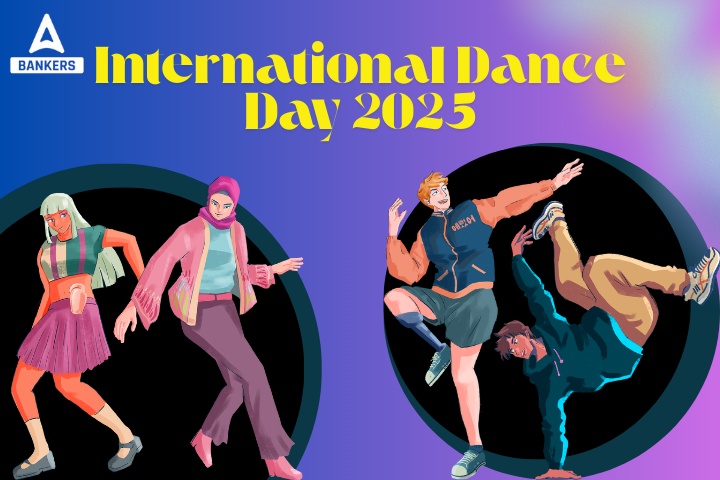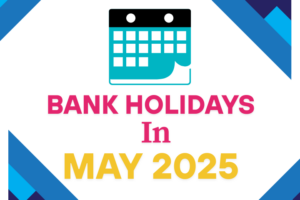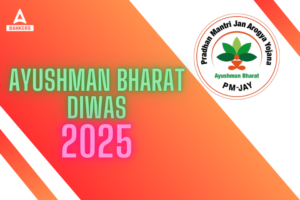On April 29, the world comes together to celebrate International Dance Day with the purpose of connecting people across countries, cultures, and generations. Whether it’s classical ballet, contemporary, hip-hop, or traditional folk dances, this day invites everyone from professional performers to enthusiastic beginners, to celebrate the joy, creativity, and unity that dance brings to our lives.
International Dance Day 2025
International Dance Day continues its goal of bringing people together through the shared joy of dancing. All around the world, people take part in events, shows, and dance workshops to enjoy and learn different dance styles. This fun and welcoming activity shows how dance can unite people, break barriers, and spread peace among all ages and cultures.
International Dance Day 2025 History
International Dance Day was established in 1982 by the Dance Committee of the International Theatre Institute (ITI), the main partner for the performing arts of UNESCO. The date, April 29, was chosen to commemorate the birthday of Jean-Georges Noverre (1727 – 1810), a French dancer and ballet master who is widely regarded as the creator of modern ballet. Noverre’s influential work, Lettres sur la danse et sur les ballets (1760), advocated for expressive, narrative-driven dance, laying the foundation for what we now recognize as classical ballet.
International Dance Day 2025 Significance
International Dance Day 2025 aims to highlight dance not only as a form of artistic expression but also as a meaningful tool for cultural exchange. The day promotes the integration of dance into educational systems to ensure its benefits reach all age groups and calls for greater recognition and support from governments, institutions, and the general public. By encouraging participation from people of all backgrounds, the day fosters inclusivity and mutual understanding. Ultimately, it invites everyone to experience the joy, creativity, and unity that dance brings.
Types of Dances
International Dance Day celebrates the diverse world of dance, from classical and folk forms to contemporary styles. Below is a detailed overview of the various types of dances across different categories:
Theatrical and Contemporary Dance Forms
These dance styles mix traditional moves with modern expressions and are often seen in performances and entertainment.
- Ballet: A highly technical form of dance that originated in the Italian Renaissance courts and later developed in France and Russia.
- Modern Dance: Developed in the early 20th century as a reaction against classical ballet, focusing on freedom of movement and expression.
- Contemporary Dance: A fusion of modern, jazz, lyrical, and ballet, emphasizing versatility and improvisation.
- Jazz Dance: Originated in African American communities, characterized by energetic movements and rhythmic patterns.
- Tap Dance: Involves creating rhythmic sounds by tapping the toes and heels, often associated with Broadway performances.
- Hip-Hop: A street dance style that emerged in the 1970s, encompassing various styles like breaking, locking, and popping.
- Ballroom Dance: Partner dances like the waltz, tango, and cha-cha, performed socially and competitively.
Classical Dance Forms
Classical dances are deeply rooted in tradition and often convey stories or express spiritual themes through intricate movements and expressions. In India, these include:
- Bharatanatyam: Originating from Tamil Nadu, this dance is characterized by fixed upper torso, bent legs, intricate footwork, hand gestures, and facial expressions.
- Sattriya: A classical dance form from Assam, known for its graceful movements, intricate footwork, and storytelling through expressive hand gestures and rhythmic patterns. It combines elements of dance, drama, and music to depict religious and mythological themes.
- Kathak: A storytelling dance from North India, known for its intricate footwork, spins, and expressive gestures.
- Kathakali: A dance-drama from Kerala, featuring elaborate costumes, makeup, and storytelling through facial expressions and hand gestures.
- Kuchipudi: From Andhra Pradesh, this dance combines fast rhythms and fluid movements, often depicting mythological stories.
- Manipuri: Originating from Manipur, it emphasizes graceful movements and is often associated with the Raslila dance form.
- Mohiniyattam: A classical dance from Kerala, characterized by graceful, swaying body movements and subtle facial expressions.
- Odissi: From Odisha, known for its fluid movements, sculpturesque poses, and storytelling through dance.
Folk and Tribal Dances
Folk dances are community-based and reflect the cultural heritage and traditions of specific regions. They are often performed during festivals, weddings, and harvest celebrations. Examples include:
- Bhangra: A lively dance from Punjab, celebrating the harvest season with energetic movements and drum beats.
- Garba: A traditional dance from Gujarat, performed in a circle, celebrating the feminine form and energy.
- Lavani: A fast-paced dance from Maharashtra, known for its powerful rhythm and graceful movements.
- Ghoomar: A traditional dance from Rajasthan, performed in a circle with graceful twirls and colorful attire.
- Bihu: A dance from Assam, performed during the Bihu festival, celebrating the Assamese New Year.
Classical and Folk Dances in India
Each state in India has various elegant types of dances. Here is a combined list of the folk and classical dances from different Indian states:
| State | Dances |
| Jammu and Kashmir | Rauf, Dhumal, Hafiza, Bhand Pather, Hikat, Mandjas, Kud Dandi Nach, Damali |
| Bihar | Jata-Jatin, Bakho-Bakhain, Panwariya, Sama Chakwa, Bidesia |
| Andhra Pradesh | Kuchipudi(Classical), Dappu, Dhimsa, Kolattam, Vilasini Natyam, Andhra Natyam, Bhamakalpam, Veeranatyam, Dappu, Tappeta Gullu, Lambadi, Dhimsa, Kolattam, Butta Bommalu. |
| Assam | Sattriya(Classical), Bihu, Gamocha, Tabal Chongli, Natpuja, Bichhua, Natpuja, Maharas, Kaligopal, Bagurumba, Naga dance, Khel Gopal, Tabal Chongli, Canoe, Jhumura Hobjanai |
| Gujarat | Garba, Dangi, Hallisaka, Gheriya Nritya, Dandia, Rathwa ni Gher, Dandiya Ras, Tippani Juriun, Bhavai |
| Haryana | Jhumar, Phag, Daph, Dhamal, Loor, Ratvai, Gugga, Khor, Gagor |
| Himachal Pradesh | Jhora, Chharhi, Thoda , Chham, Nati, Jhali, Chharhi, Dhaman, Chhapeli, Mahasu, Dangi |
| Karnataka | Yakshagana, Bolak-aat, Ummatt-aat, Dollu Kunitha, Hampi, Bayalata, Veeragase, Bhootada Kola, Huttari, Suggi, Kunitha, Karga, Lambi |
| Kerala | Kathakali (Classical), Mohiniattam(Classical), Kummattikali, Ottam Thullal, Kolkali, Padayani, Ottam Thulal, Kaikottikali |
| Maharashtra | Lavani, Povada, Dhangri Gaja, Lezim, Nakata, Koli, Gafa, Dahikala Dasavtar or Bohada |
| Odisha | Odissi (Classical), Mayurbhanj Chhau, Savari, Ghumara, Painka, Munari, Chhau, Dalkhai, Sakhi Kandhei, Paika, Gotipua, Tiger Nach, Ranapa |
| West Bengal | Jatra, Baul, Marasia, Mahal, Kathi, Gambhira, Dhali, Dhali Jatra, Bhatiyali Geet, Gambira, Alkam, Keertan |
| Punjab | Dhaman, Bhand, Naqual, Baga, Heer Geet, Tappa, Viyahula Giddha, Bhangra, Daff |
| Rajasthan | Ghoomar, Chakri, Bhavai, Jhulan, Gangaur, Terah Taali, Suisini, Kalbelia, Khayal, Jhulan Leela, Jhuma, Suisini, Ghapal |
| Tamil Nadu | Bharatanatyam(Classical), Kummi, Karagam, Natyanjali, Kolattam, Kavadi |
| Uttar Pradesh | Kathak(Classical), Nautanki, Raslila, Kajri, Jhora, Chappeli, Jaita |
| Uttarakhand | Garhwali, Kumayuni, Kajari, Jhora, Raslila, Choliya, Hurka Baul, Chappeli |
| Goa | Tarangamel, Dhalo, Kunbi, Dhangar, Koli, Dekhni, Fugdi, Shigmo, Ghode, Modni, Samayi nrutya, Jagar, Ranmale, Gonph, Tonnya mell |
| Madhya Pradesh | Jawara, Matki, Phulpati, Aada, Khada Nach, Phulpati, Grida, Selalarki, Selabhadoni, Maanch |
| Jharkhand | Alkap, Karma Munda, Agni, Jhumar, Janani Jhumar, Mardana Jhumar, Paika, Karma, Birhor, Kadsa, Phagua, Hunta Dance, Mundari Dance, Sarhul, Barao, Jhitka, Danga, Domkach, Ghora Naach |
| Chhattisgarh | Gaur Maria, Panthi, Gaur, Saila, Sua, Raut Nacha, Pandwani, Vedamati, Kapalik, Bharthari Charit, Chandaini |
| Arunachal Pradesh | Buiya, Rikhampada, Ponu Yoksi, Bardo Chham, Ponung, Popir, Chalo, Wancho, Pasi Kongki, Ponung, Popir, Bardo Chham |
| Manipur | Manipuri(Classical), Dol Cholam, Thang Ta, Lai Haraoba, Pung Cholom, Khamba Thaibi, Nupa Dance, Raslila, Pong Cholom, Jagoi, Khubak Ishei, Lhou Sha |
| Meghalaya | Ka Shad Suk Mynsiem, Laho, Nongkrem, Chad Sukra, Behdienkhlam |
| Mizoram | Cheraw Dance, Khuallam, Chailam, Sawlakin, Cheraw, Khullam, Chawnglaizawn, Zangtalam, Par Lam, Sarlamkai/Solakia, Tlanglam |
| Nagaland | Rangma, Bamboo Dance, Zeliang, Nsuirolians, Gethinglim, Temangnetin, Hetaleulee, Leshalaptu, Aaluyattu |
| Tripura | Hojagiri, Maimata |
| Sikkim | Chu Faat Dance, Sikmari, Singhi Chaam or the Snow Lion Dance, Yak, Chaam, Denzong Gnenha, Tashi Yangku Dance, Khukuri Naach, Chutkey Naach, Maruni Dance, Maruni, Limbo or Subba, Lama or Chham |
| Ladakh | Spao |
| Lakshadweep | Lava, Kolkali, Chakali, Parichakali |
| Related Posts | |
| Important Days in April 2025 | Important Day in May 2025 |
| Important Days and Dates in 2025 | Bank Holidays in May 2025 |




 Bank Holidays in May 2025, Will Bank be ...
Bank Holidays in May 2025, Will Bank be ...
 International Labour Day 2025, Theme, Hi...
International Labour Day 2025, Theme, Hi...
 Ayushman Bharat Diwas 2025, Date, Theme ...
Ayushman Bharat Diwas 2025, Date, Theme ...







